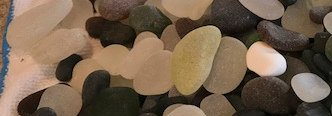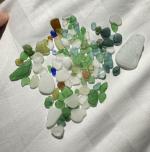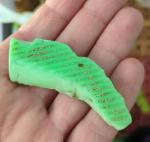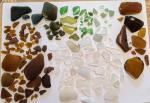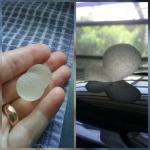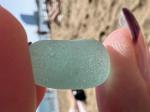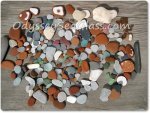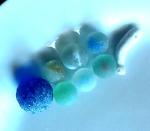Fort Bragg
by T.Rose
(South Dakota)
Glass Beach in Fort Bragg, California
Note: though not illegal, the city of Fort Bragg greatly discourages picking glass (they've passed an ordinance making it illegal, but as I understand it's not enforceable because of a tidal line technicality). Also, a wonderful sea glass museum is located at the northern part of FB that is fabulous in every way. Displays of sea glass, history and jewelry. It's almost better than the picking. (They provide maps of other sites too; further south of FB.)
Due to the discouraged climate of picking there, it was a one-time visit for me and Hubs. But we loved it and highly recommend at least photographing the beach. It's so unique and gorgeous and is purported to have the most concentration of sea glass in the world.
There are three sites that were used for dumping. Picking is encouraged at site #3 - the newest and most accessible beach. There isn't much, folks. The glass didn't get dumped there until the 1940s and is heavily picked and mostly white.
Site #2 is the middle site and is cordoned off in an attempt to keep people from picking, but is so pretty. There's truly more glass than rocks or sand. Again, mostly white and nothing rare. Just more fun to look, than pick.
Site #3 is the oldest dumping site from 1906. This is worth the additional trek and seems to not be well-known. Didn't find rare, but the tumble and size of the common colors is super-great. If you dig white, brown and green, the gem quality and size is definitely there. (But due to over-picking, rare is not there at all. Not even blues or aquas really.)
Remember, though not illegal, picking is discouraged. Understand the reception to having a bag of sea glass as you walk the nearly mile stretch back to the parking lot might be looked on with a negative attitude by all locals. And then there's the added perspective of not over-picking, in an attempt to provide future generations with the experience of this neat place.
The curator at the museum explained that because of the rocky formations assembled in a type of "ring," around where the dumping happened, the glass never left. It just remains, endlessly tumbling. Thus, the glass at these sites is not renewable. When it's gone, it will be forever.
